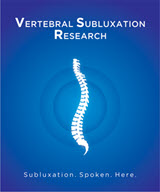Canadian Memorial Chiropractic College Joins Anti-Subluxation Hate Group

The Canadian Memorial Chiropractic College recently proudly announced that they have signed onto the International Chiropractic Education Collaboration Clinical and Professional Chiropractic Education Position Statement, joining 12 other institutions that have renounced subluxation around the world. This document is based upon and supports the theme of the World Federation of Chiropractic's Educational Statement formulated in November 2014.
Among other things the anti-subluxation hate group's Position Statement includes:
“The teaching of vertebral subluxation complex as a vitalistic construct that claims that it is the cause of disease is unsupported by evidence. Its inclusion in a modern chiropractic curriculum in anything other than an historical context is therefore inappropriate and unnecessary.”
They additionally assert:
“Practice styles, which may contribute to inappropriate patient dependence, compromise patient confidentiality or require repeated exposure to ionising radiation are not part of an undergraduate chiropractic curriculum. Students should be taught to recognise that such approaches are not acceptable in terms of the best interests of patients or the chiropractic profession.”
The organizations define "Practice styles" as referring
". . . to routine ‘high volume’ chiropractic care models, ‘open plan’ chiropractic care models and the delivery of unsubstantiated ‘treatment packages’ or clinical techniques."
They also fully embrace the practice of immunization and vaccination:
“The chiropractic programs below support the World Health Organization ‘WHO’s vision and mission in immunization and vaccines - 2015-2030”
According to the CMCC Press Release bragging about their support of the anti-subluxation group CMCC stated:
"The statement, originally formulated as a collaborative effort among several European chiropractic institutions and one in South Africa was formally released at the 2015 scientific meeting of the World Federation of Chiropractic in Athens, and updated in 2017. The statement was developed as a way to provide a cohesive view of how, in the interest of the welfare of the patient, chiropractic education should be of the highest quality and founded on the principles of evidence-based care, with curricula that is responsive to changing patient, societal and community needs and expectations within a modern health care system."
The Position Statement falls in line with similar statements and the overall movement among the Chiropractic Cartel and the Subluxation Deniers that run it. Such positions have taken root in the United Kingdom, Australia, Canada and in some areas of the United States.
List of the schools that have signed the anti-subluxation position document:

According to Dr. Rahim Karim, Chair of the CMCC Board of Governors:
“We feel it is time to make our educational position clear regarding the alignment of our curriculum, research efforts and model of care with our continued emphasis upon evidence-based and patient-centred care.”
CMCC, President Dr. David Wickes, who has called chiropractors who manage vertebral subluxation the "Gangrenous arm of the chiropractic profession" stated:
“CMCC is committed to continually evolve its programs and realize our vision to create leaders in spinal health. We have undertaken extraordinary efforts over the past few years to emphasize the rapid translation of research into our curriculum and patient care practices, and to forge partnerships with other innovative institutions. Declaring our support for the Position Statement will better enable us to attract the best students and faculty, and to strengthen and build trust with the public, partners and communities we serve.”
Wickes comments are at odds with testimony he provided before the United States Department of Education on Wednesday, December 14, 2011 during a hearing for consideration of renewal of recognition of the Council on Chiropractic Education (CCE). At issue were the USDE's concerns that subluxation was not being taught at chiropractic institutions.
Wickes stated in his testimony:
“The standards require that the students learn how to evaluate, understand the concepts of subluxation, how to assess for the presence of subluxation, and how to perform the vertebral adjustment to correct subluxation. That's a part of our accreditation requirement. You cannot get accredited unless you show that your students are competent in those areas.”
According to a 2011 study in Chiropractic & Manual Therapies reviewing the curriculums of 16 North American chiropractic colleges they found that Canadian Memorial Chiropractic College was one of only three colleges that made no mention of subluxation in their academic catalogues.
Also testifying before the USDE was David O'Bryon who is President of the Association of Chiropractic Colleges of which CMCC is a member. O'Bryon assured the United States Department of Education when the concern was raised that:
“All of our schools teach vertebral subluxation”
Looks like something changed after the CCE's recognition was renewed.
Now, according to CMCC, their curriculum ". . . emphasizes the science and best-practices of today, not our past. An emphasis on evidence-based practice has replaced dogma and unfounded vitalistic concepts from a century ago.”
Canadian chiropractors practicing in a vitalistic, salutogenic model have found themselves under attack in several Canadian Provinces where the Subluxation Deniers have seized control of the regulatory boards and are systematically going after these practitioners.
According to sources this has led to an exodus of members from the Canadian Chiropractic Association and the development of a new organization - The Alliance for Chiropractic.
CLICK HERE for more on the Alliance
CLICK HERE for more on the events in Canada

Blogs
- The Chiropractic Cartel: A Look Back at Bias in Accreditation and its Imact on Today's Profession
- Inside Montana's Chiropractic Monopoly: ACA & MCA's Brazen Board Takeover
- Concerns Grow About Control of the NY State Chiropractic Board by the ACA - Use of X-ray in NY Under Threat
- Reproductive Health Information and Chiropractic Care: Navigating New Privacy Regulations
- Navigating Substance Use Disorder (SUD) Consent: What Chiropractors Need to Know













